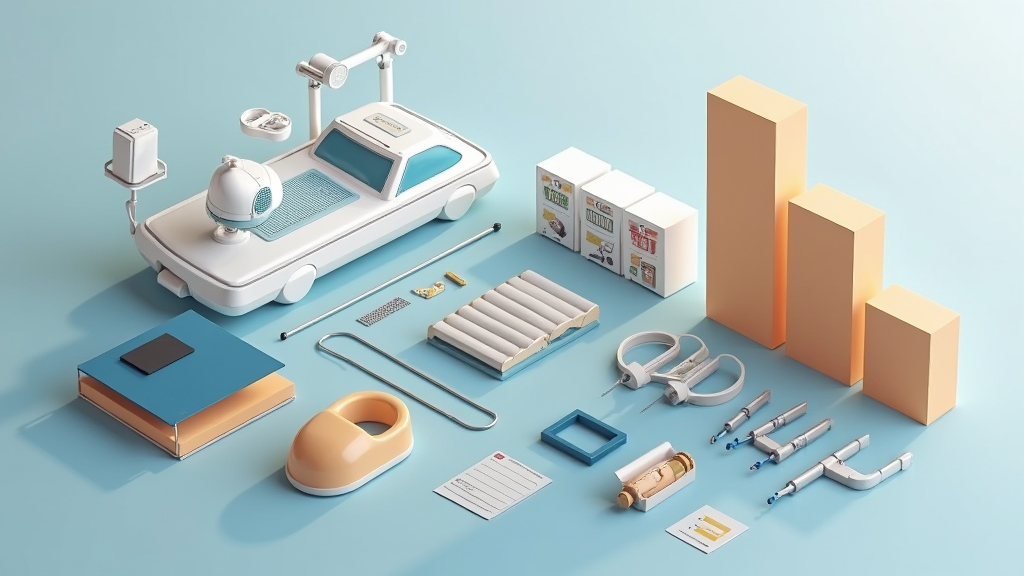Table of Contents
- Introduction
- Understanding the Basics of Pickleball Training Aids
- Detailed Guide to Specific Training Aids
- Choosing the Right Training Aid
- Conclusion
Introduction

Overview and Importance
Pickleball has exploded in popularity, becoming one of the fastest-growing sports in the United States. With over 4.8 million players nationwide in 2022, the demand for ways to improve skills and elevate gameplay is higher than ever. This is where pickleball training aids come into play. These tools are designed to enhance your skills, boost your confidence, and ultimately improve your overall game level.
One of the most significant advantages of using training aids is the ability to practice effectively, even when you don’t have a partner available. Whether you’re working on your dinking, serves, or volleys, training aids provide the opportunity for focused, repetitive practice. Furthermore, the widespread adoption of training aids in pickleball clinics and camps underscores their effectiveness and value in skill development.
Background
The evolution of pickleball training has mirrored the sport’s rapid growth. Initially, training involved basic drills and simple practice routines. However, as the sport has matured, so too has the sophistication of its training methods. We’ve seen a shift from traditional drills to the introduction of advanced tools designed to target specific areas of improvement.
Recent developments in pickleball training technology are particularly exciting. The introduction of smart paddles that track performance metrics, VR training programs that simulate match scenarios, and advanced ball machines capable of delivering a variety of shots with precision have revolutionized how players train and improve their game.
What You’ll Learn
In this guide, we’ll delve into the world of pickleball training aids, providing you with the knowledge you need to make informed decisions about which tools are right for you. We’ll cover the core concepts, outlining the key features to look for in effective training aids. This includes understanding the benefits of different types of equipment and how they can address specific weaknesses in your game.
Furthermore, we’ll explore the practical applications of various training aids. You’ll learn how to use different tools to improve specific aspects of your game, from perfecting your serve and return to mastering your net play and developing strategic shot placement. By the end of this guide, you’ll have a comprehensive understanding of how to leverage training aids to unlock your full potential on the pickleball court.
Understanding the Basics of Pickleball Training Aids
Fundamental Concepts
Pickleball training aids are tools and devices designed to enhance specific skills and techniques in the game. They offer targeted practice opportunities, helping players of all levels improve their performance. Understanding the fundamental concepts behind these aids is crucial for effective utilization.
- Key definitions:
- Training aid: A tool or device used to improve specific skills in pickleball.
- Dink: A soft shot that lands in the non-volley zone.
- Volley: Hitting the ball in the air before it bounces.
The core principle of using pickleball training aids is to target specific aspects of your game that need improvement. Whether it’s perfecting your dink, mastering the volley, or increasing your reaction time, a well-chosen training aid can provide focused practice. Durability and user-friendliness are also essential; a training aid should be able to withstand regular use and be easy to set up and operate. Finally, the best training aids enhance enjoyment and engagement in practice, making the process of improvement more fun and motivating.
Essential Components
When evaluating pickleball training aids, several essential components should be considered. These factors ensure that the aid is effective, convenient, and provides good value.
- Required elements:
- Lightweight and compact design for portability.
- Durable construction to withstand regular use.
- Easy setup and user-friendly operation.
At a minimum, a good training aid should be lightweight and compact, making it easy to transport and store. It must also be durable enough to withstand regular use, whether indoors or outdoors. Finally, it should be easy to set up and operate, allowing you to focus on your training rather than struggling with complicated instructions.
Key features to consider when selecting a pickleball training aid can be broken down into primary and secondary aspects. Understanding these features will help you make an informed decision based on your specific needs and goals.
- Key features to consider:
- Primary aspects:
- Secondary aspects:
- Skill focus (e.g., dinking, volleying, sweet spot).
- Portability and ease of storage.
- Durability and quality of materials.
- Adjustability and customization options.
- Compatibility with other training tools.
- Price point and value for money.
The primary aspects include the specific skill the aid targets, such as dinking or volleying, its portability and ease of storage, and the durability and quality of the materials used in its construction. Secondary aspects include adjustability and customization options, compatibility with other training tools you may already have, and the price point and overall value for money.
It’s also important to be aware of the variations available in pickleball training aids. These variations cater to different training preferences and scenarios.
- Important variations:
- Solo vs. partner training aids.
- Mechanical vs. electronic aids.
- Indoor vs. outdoor suitability.
Some aids are designed for solo practice, while others require a partner. Mechanical aids rely on physical components, while electronic aids may incorporate features like ball launchers or sensors. Finally, some aids are better suited for indoor use, while others are designed to withstand the elements outdoors. Considering these variations will help you choose the training aid that best fits your individual needs and training environment.
Detailed Guide to Specific Training Aids

Dinking and Volleying
Perfecting your dinks and volleys is crucial for success in pickleball. A dedicated training aid can significantly accelerate your progress. Consider a compact, portable practice pad designed specifically for this purpose. These pads, often around 3 ft x 4 ft, feature a non-slip surface and durable construction, making them ideal for at-home use. The best part? You don’t need a partner or even a net to improve your soft game. Many come with a drill catalog to guide you through diverse practice routines, ensuring you maximize your training time.
Sweet Spot Training
Consistently hitting the “sweet spot” on your paddle is essential for power and control. Sweet spot training aids are designed to help you achieve just that. These aids often consist of a pad that fits over your existing paddle, forcing you to focus on precise contact. Look for models made from carbon fiber with a core similar to high-end paddles (around 16mm). An extra-long handle can be a bonus, especially if you utilize two-handed shots. Some sweet spot trainers are even USAPA approved for competitive training, allowing you to hone your skills while adhering to official standards.
Ball Launching Machines
Take your training to the next level with a ball launching machine. These devices are suitable for players of all levels, from beginners to seniors. Key features to consider include ball capacity (around 15 balls is common), launch speed (look for adjustable speeds, typically in the 24-28 mph range), and launch angle (adjustable from low to high). Portability is also important, so opt for a compact and lightweight model (around 6-7 pounds). Many machines offer different power source options, such as D batteries, AC adapters, or portable power banks. Some advanced models even include an auto-swing function to simulate various shot types, providing a dynamic and challenging practice experience.
Small Space Training
Limited space doesn’t have to limit your training. Small space training aids are perfect for honing your skills even when you’re short on room. A popular option involves a ball attached to a wooden base by an elastic cord. This setup allows you to practice your strokes and develop wrist strength and control in a confined area, making it ideal for soft walls.
Balls
The right ball can make a difference, especially when playing outdoors. Look for pickleballs specifically designed for outdoor play, typically weighing around 26g with a circumference of 74mm. A unique two-tone design can significantly improve visibility, making it easier to track the ball in various lighting conditions. Consider buying balls in packs of four to ensure you always have enough on hand.
Paddle Customization
Fine-tune your paddle to your exact preferences with paddle customization tools. These typically involve adding weight to specific areas of the paddle to adjust the weight distribution. This can improve power, control, or maneuverability, depending on your needs. While adjusting to the new weight distribution may take some time, the benefits can be significant. These tools are legal for tournament play and are often used by professional and advanced players.
Complete Training Sets
For those just starting out or looking for a comprehensive training solution, a complete training set is an excellent choice. These sets typically include everything you need to get started: four USAPA-approved paddles made of robust polymer with comfort grip handles, four USAPA-regulation pickleballs, and a convenient carry bag for easy transport and storage. It’s an all-in-one solution for individuals, families, or groups looking to learn and improve their pickleball skills.
Skill Development
Enhance your overall game with skill development training aids. These are designed to improve hand-eye coordination, balance, and footwork. Some aids feature bounce balls that return to the player, allowing for non-stop training and improving reflexes, agility, and hand-eye coordination. Others feature uneven surfaces for unpredictable bounces, further challenging your reflexes and improving your ability to react to unexpected shots. These aids are portable and suitable for both indoor and outdoor practice, enhancing your dink skills and playing a versatile role in your skill development. Don’t underestimate the cardiovascular and athletic conditioning benefits as well.
Advanced Techniques
Take your game to the next level by diving into advanced techniques. Seek out training programs that feature a mix of video lessons and on-court drills, created by professional pickleball coaches for a comprehensive learning experience. These programs often include drills to improve serving, volleying, and strategy. The flexibility of online modules allows you to access training materials whenever and wherever you are. Some aids complement ball machines, offering diverse drills to enhance shot accuracy, power, and control. Look for aids durably designed to endure rigorous training, supporting varied shot practices including forehand, backhand, volleys, and dinks.
Target Practice
Improving accuracy, control, and placement is paramount for dominating the court. Target practice aids are designed to help you hone these skills. These aids are often portable and adjustable to fit any shot height, providing instantaneous feedback for real-time improvements. Targets can be used for a range of shots, like backhands, volleys, and smashes. Some target practice aids are easily attachable to nets, focusing on precise court areas, and are made from impact-resistant nylon and durable metal frames. Court markers, made from non-slip, light, and flexible rubberized material, can also be used to target specific shots and drills, as well as for agility training and court layout practice.
Smart Technology
Embrace the future of pickleball training with smart technology. These innovative aids provide real-time audio, visual, and statistical feedback on your performance. A smart paddle with integrated sensors can track various metrics, providing valuable insights into your game. While these paddles often match the specs of performance paddles (around 9.2oz weight, 15.5 inches length, 10mm thickness), it’s important to note whether they include external app support for data analysis and tracking.
Choosing the Right Training Aid
Targeting Specific Skills
Selecting the right training aid begins with a thorough understanding of your current skill level. It’s not enough to simply want to improve; you need to pinpoint the specific areas where you’re struggling. Are you having trouble with your putting stroke, your chipping accuracy, or your driving distance? Honest self-assessment is crucial for effective improvement.
Once you’ve identified your weaknesses, you can start exploring training aids designed to address them. For example, if you’re struggling with your putting alignment, a putting mirror or alignment sticks can help you visualize the correct setup. If your issue is consistent contact, a hitting mat with target lines can provide valuable feedback. The key is to choose tools that directly target the specific aspects of your game that need the most work. Don’t just buy the latest gadget; buy the aid that will give you the most focused and relevant practice.
Considering Portability and Durability
When choosing a training aid, it’s important to think about how and where you’ll be using it. Will you be taking it to the driving range, using it at home, or packing it in your golf bag for practice rounds? Portability and durability are key factors to consider, especially if you plan to use the aid frequently.
Opt for training aids that are lightweight and compact, making them easy to transport and store. Bulky or heavy aids can quickly become a burden, discouraging you from using them regularly. Also, pay attention to the materials used in the construction of the aid. Durable materials will ensure that the aid can withstand regular use and the rigors of travel, providing long-lasting performance and value. Look for aids made from sturdy plastics, metals, or fabrics that can handle the wear and tear of frequent practice sessions.
Setup and User-Friendliness
The best training aid in the world is useless if you can’t figure out how to use it. Look for aids that are easy to set up and understand, allowing you to start practicing quickly and efficiently. Complicated setups or confusing instructions can lead to frustration and wasted time, ultimately hindering your progress.
Choose aids with a user-friendly design that is intuitive and easy to operate. Clear instructions, simple adjustments, and straightforward feedback mechanisms are all hallmarks of a well-designed training aid. The less time you spend fiddling with the aid, the more time you can spend focusing on your practice and improving your game. A user-friendly aid will encourage you to practice more often and more effectively, leading to faster and more consistent results.
Conclusion

Summary of Key Benefits
Throughout this guide, we’ve explored a variety of training aids designed to elevate your gaming experience. By incorporating these tools into your routine, you can unlock a wealth of benefits that extend beyond simply improving your in-game performance.
One of the most significant advantages is the improved skills and confidence you’ll gain. Training aids provide structured practice and immediate feedback, allowing you to identify weaknesses and hone your strengths. As you witness tangible progress, your confidence will naturally soar, leading to more decisive and effective gameplay.
Furthermore, using training aids can lead to increased enjoyment and engagement. By breaking down complex skills into manageable steps, these tools make the learning process more accessible and less frustrating. The sense of accomplishment you feel as you master new techniques will fuel your motivation and keep you engaged in the game.
Ultimately, the goal is to achieve an enhanced game level. Whether you’re aiming to climb the leaderboards, compete in tournaments, or simply dominate your friends, training aids can provide the edge you need to reach your full potential. By consistently practicing with these tools, you’ll develop the reflexes, strategy, and game sense required to excel.
Final Recommendations
To maximize the effectiveness of training aids, it’s important to approach their use strategically. Here are some final recommendations to guide you on your journey to becoming a better gamer:
Start with basic aids: Begin by focusing on fundamental skills. Master the basics before moving on to more complex techniques. For example, if you’re improving your aim, start with simple target tracking exercises before attempting advanced flick shots.
Gradually introduce advanced tools: As your skills progress, gradually introduce more advanced training aids. Don’t overwhelm yourself by trying to learn everything at once. Focus on mastering one skill at a time, and then build upon that foundation.
Combine aids with coaching: For a comprehensive training approach, consider combining training aids with coaching. A skilled coach can provide personalized feedback, identify areas for improvement, and help you develop a customized training plan. Coaching can offer insights that training aids alone cannot provide, accelerating your progress and helping you reach your goals faster.
By following these recommendations and consistently practicing with training aids, you’ll be well on your way to unlocking your full gaming potential. Good luck, and happy gaming!

